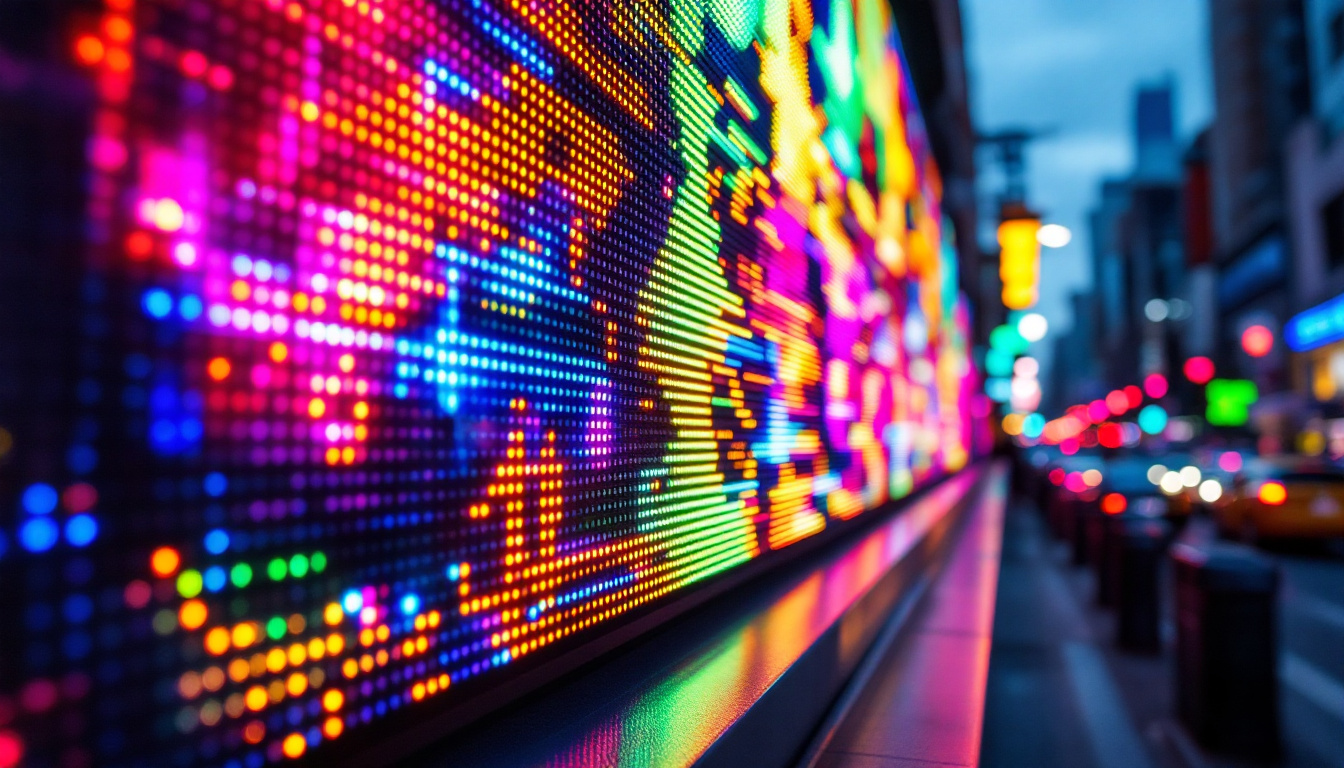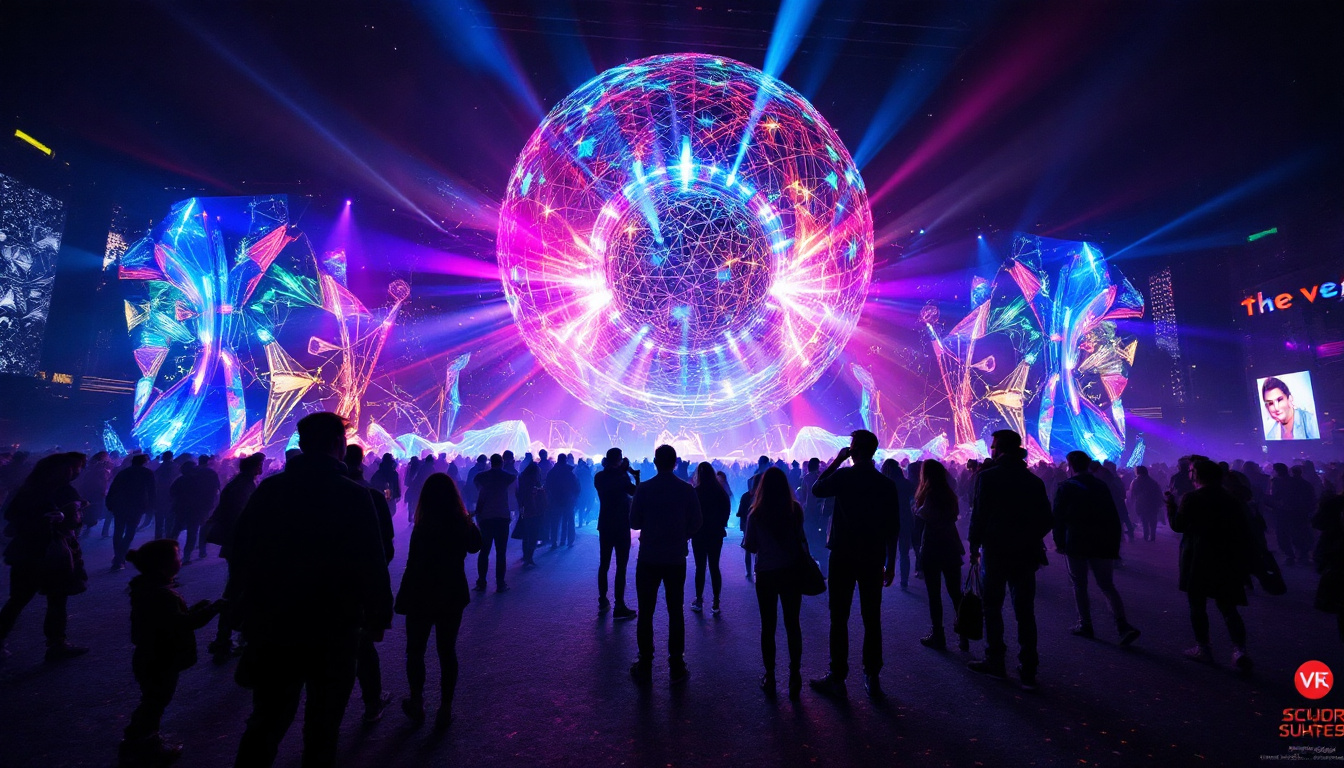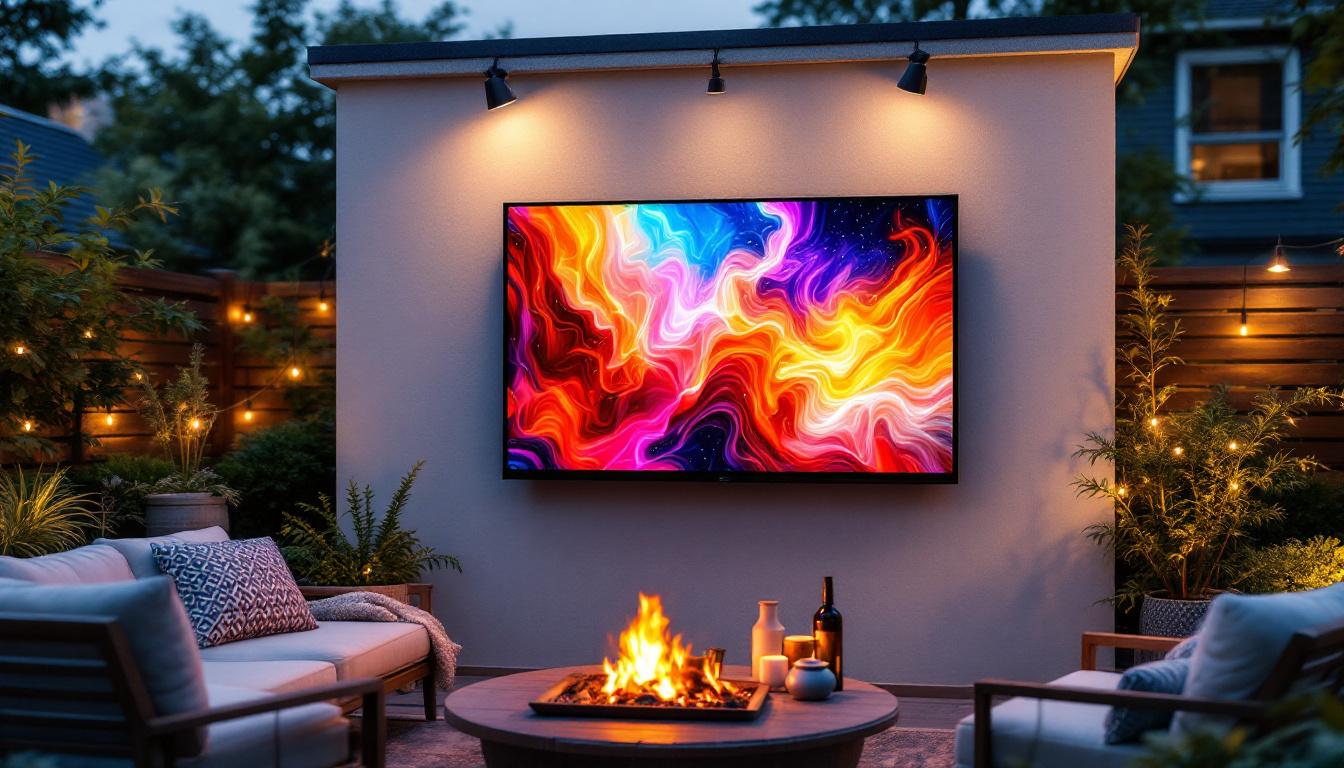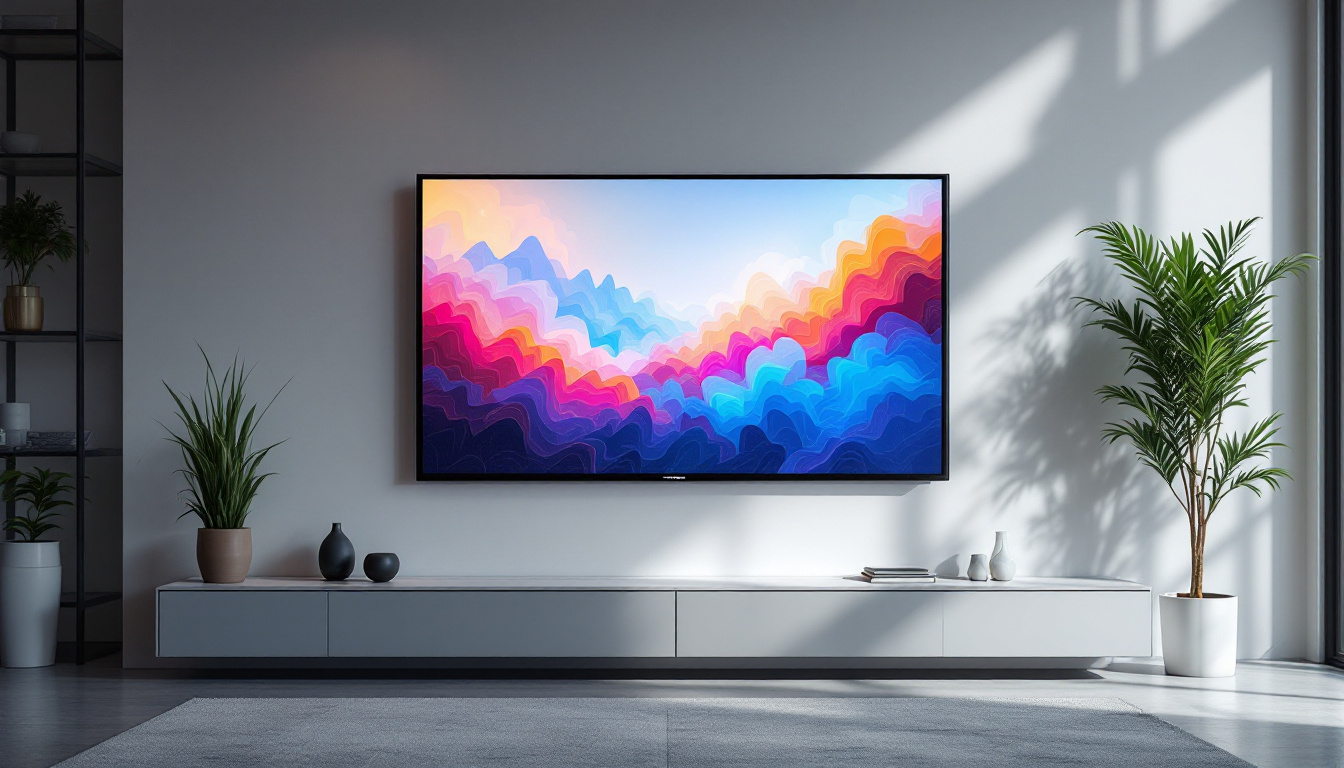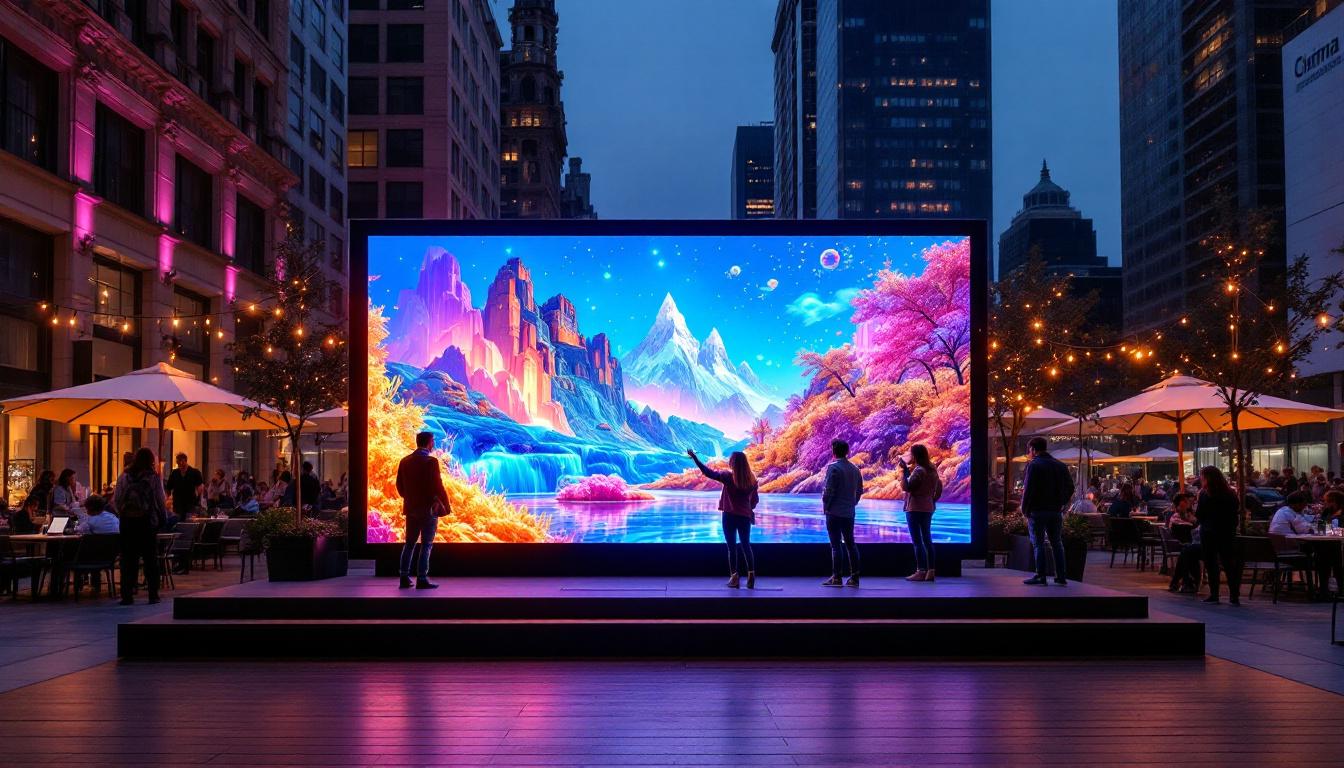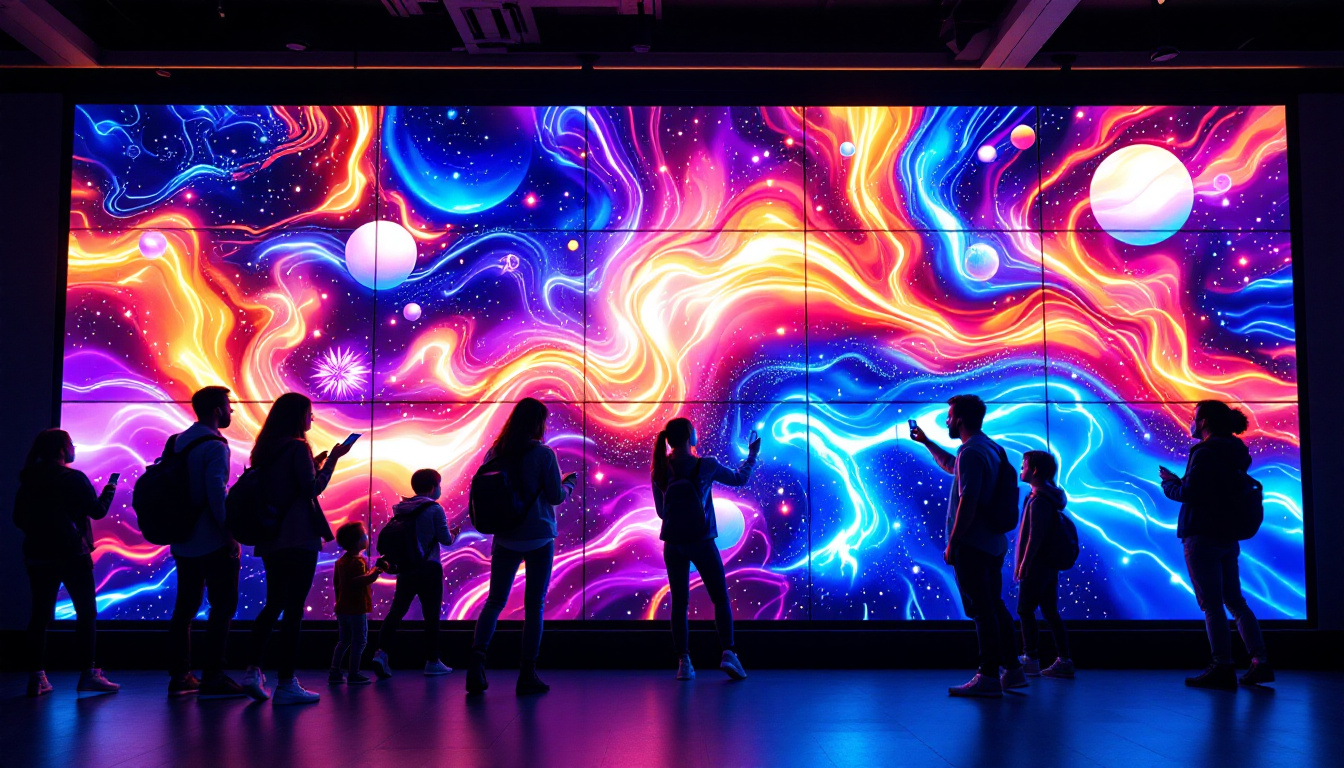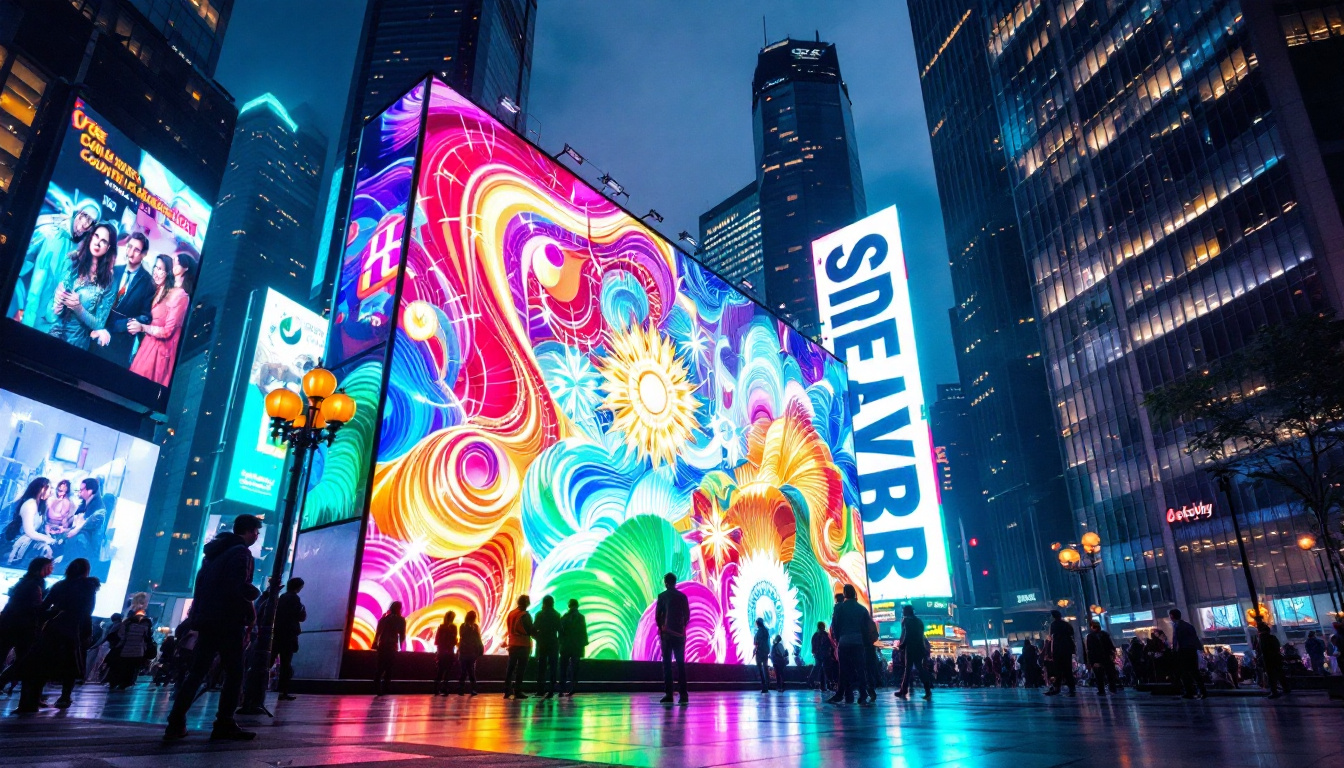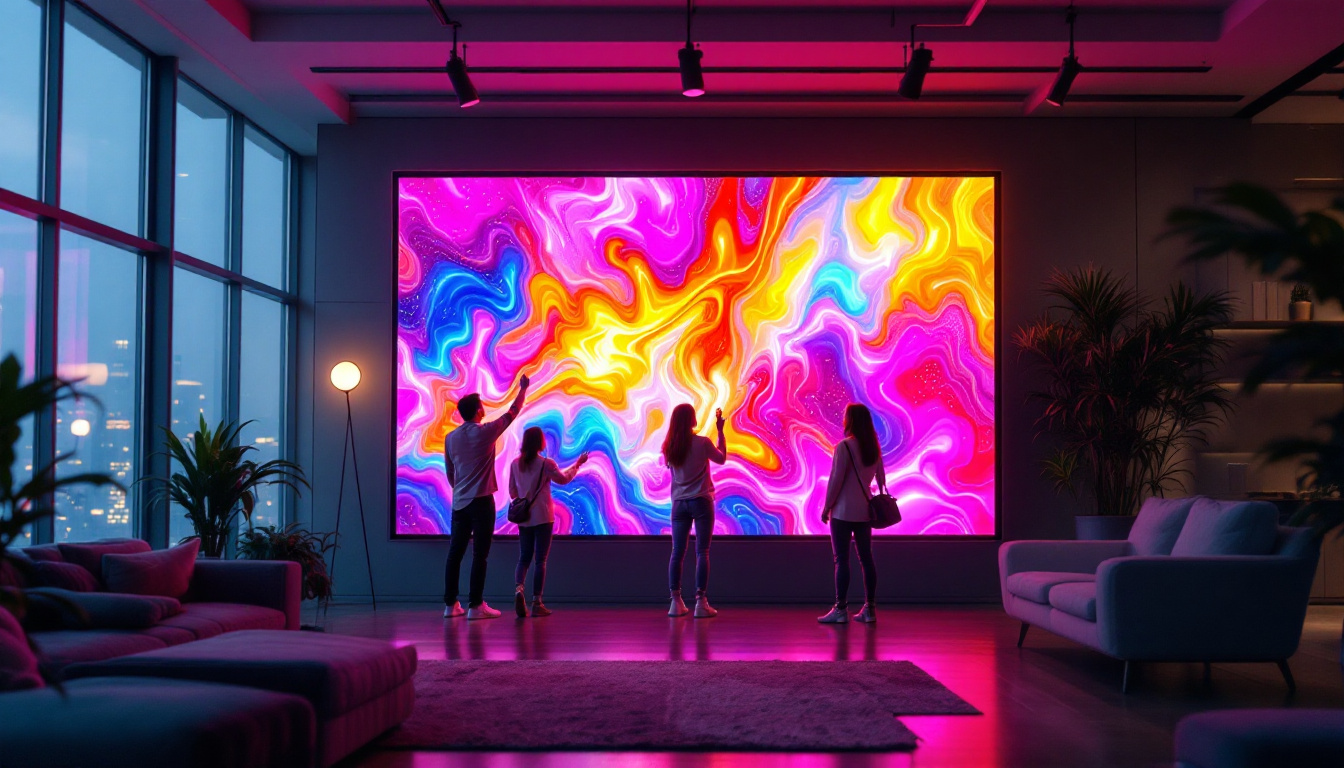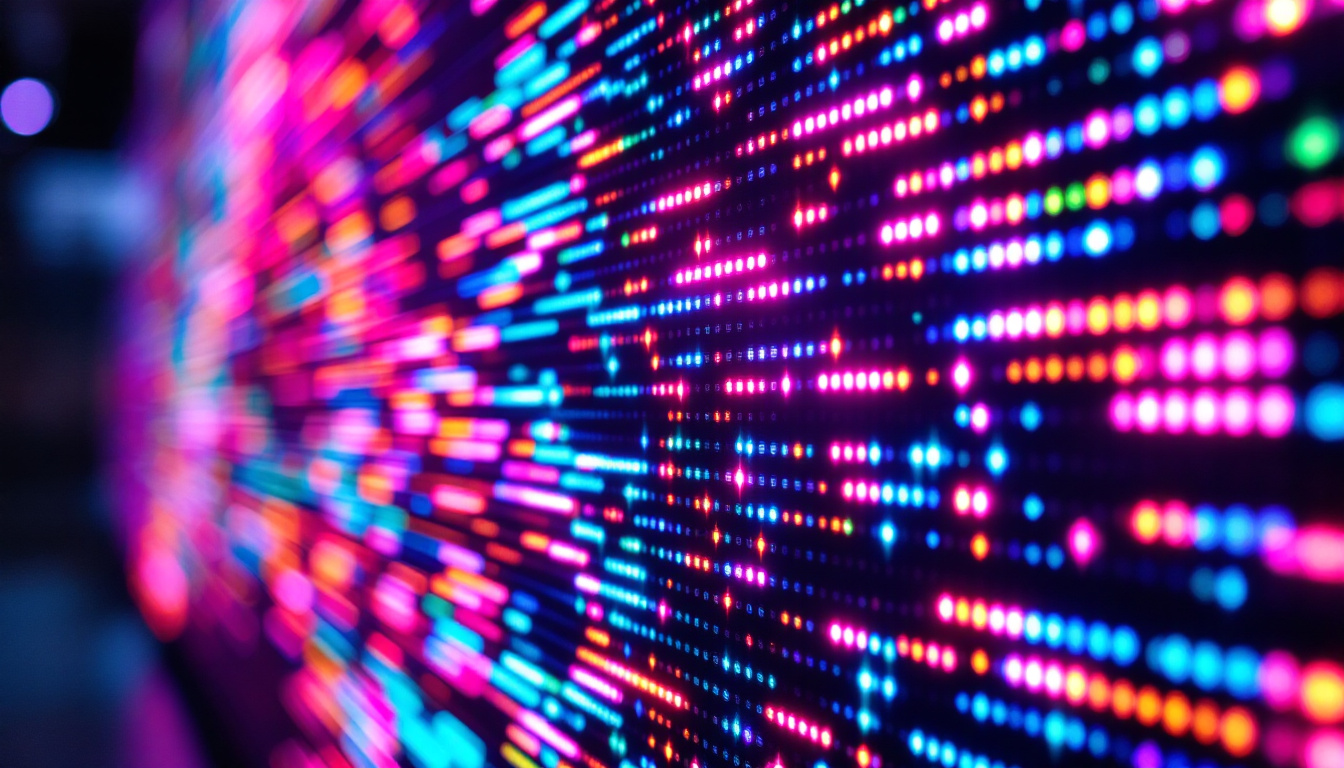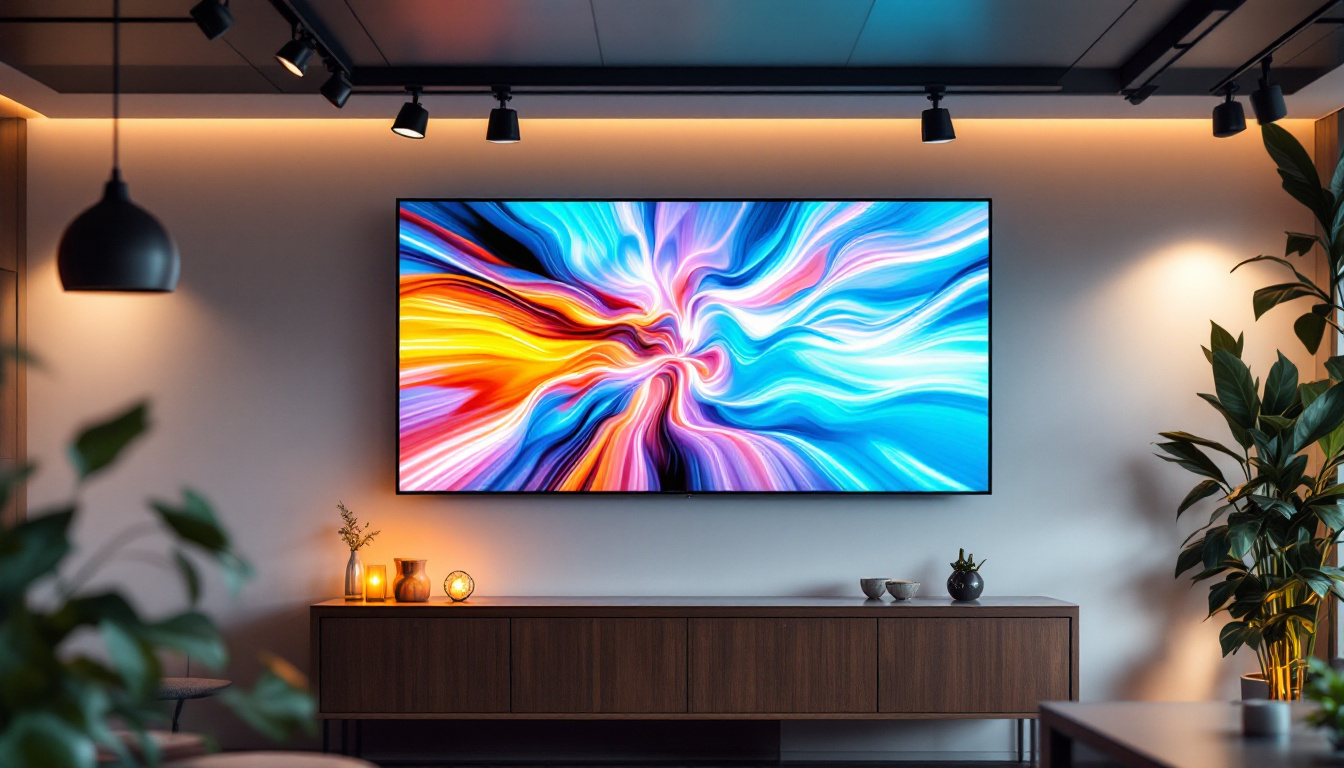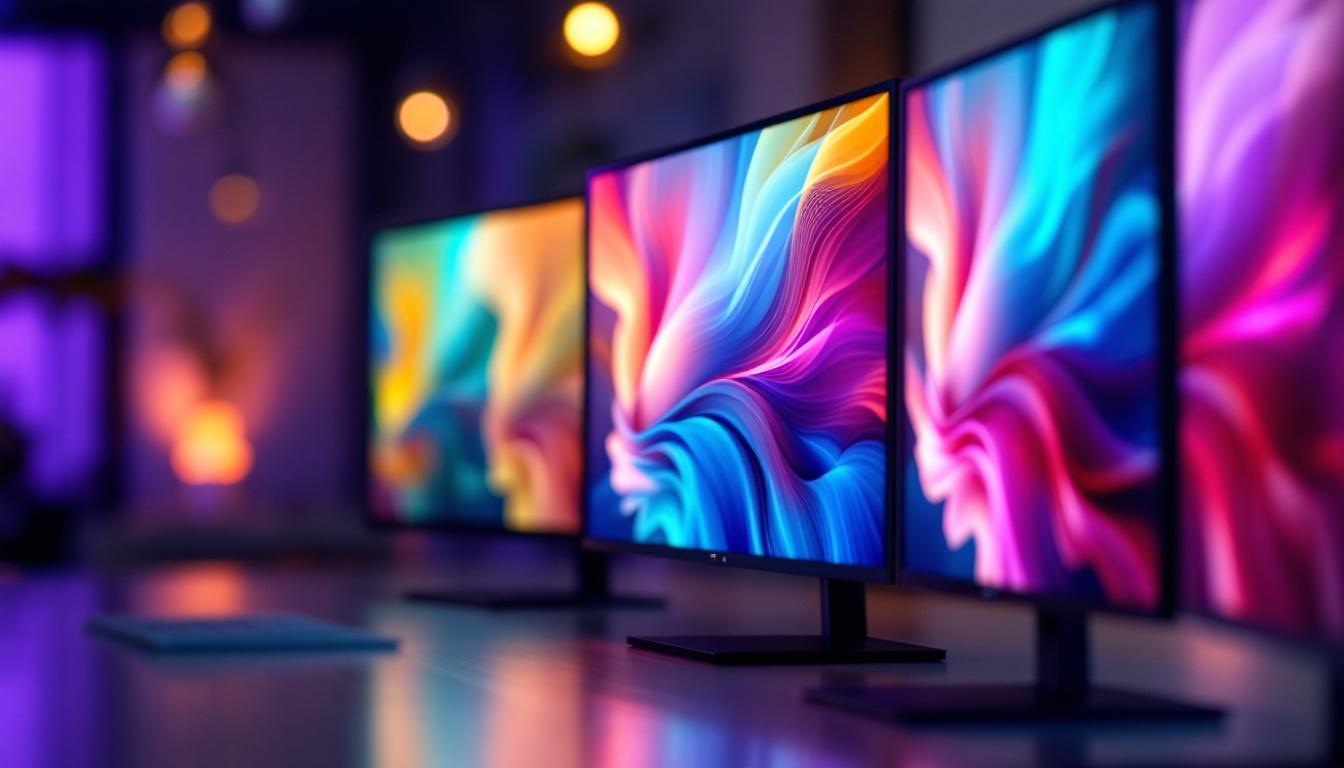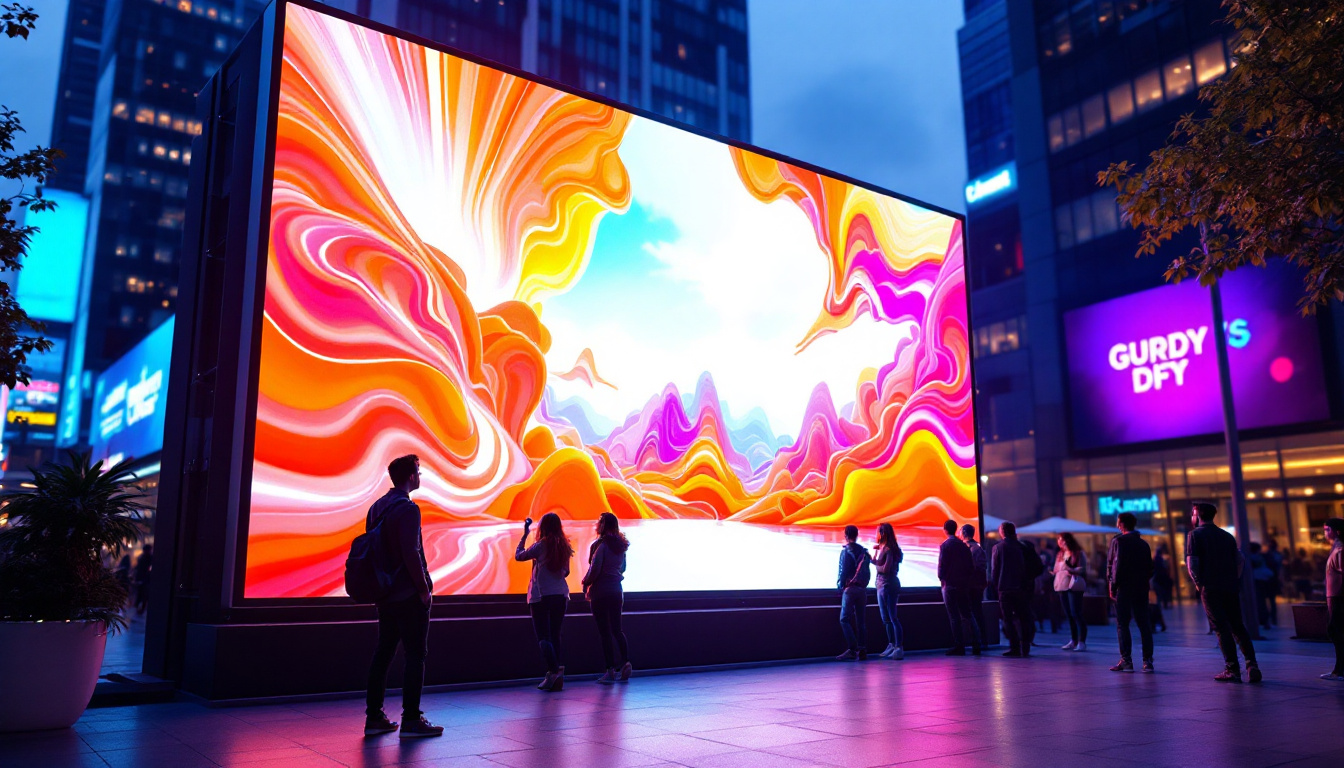In the bustling urban landscapes of China, LED billboards have become an iconic element of city life. From the neon-lit streets of Shanghai to the commercial hubs of Beijing and Shenzhen, these vibrant displays captivate millions daily. But what exactly makes these Chinese billboards so effective, and how has LED technology transformed outdoor advertising in China? This article delves into the world of LED displays, exploring their technology, applications, and the unique factors shaping their use in China’s advertising ecosystem.
Understanding LED Technology in Billboards
What is an LED Display?
LED stands for Light Emitting Diode, a semiconductor device that emits light when an electric current passes through it. LED displays are composed of thousands, sometimes millions, of these tiny diodes arranged in a matrix to form images, videos, or text. Unlike traditional billboards that rely on printed materials or fluorescent lighting, LED billboards use these diodes to produce bright, vivid colors that are visible even in direct sunlight.
Chinese LED billboards often utilize full-color RGB (Red, Green, Blue) LEDs, which combine these three colors at varying intensities to create a wide spectrum of colors. This capability allows for dynamic content that can be updated in real-time, offering advertisers unparalleled flexibility and engagement opportunities. Furthermore, the technology behind LED displays has evolved significantly, with advancements in pixel pitch and resolution allowing for clearer images and more intricate designs. This means that even at a distance, the details of the advertisement remain sharp and enticing, drawing in potential customers from afar.
Advantages of LED Displays Over Traditional Billboards
The shift from static to digital LED billboards has revolutionized outdoor advertising globally, and China is no exception. LED displays offer several advantages:
- Brightness and Visibility: LED billboards can achieve brightness levels exceeding 6,000 nits, ensuring visibility in all lighting conditions, including bright daylight.
- Dynamic Content: Advertisers can change content remotely and instantly, enabling targeted campaigns and timely promotions.
- Energy Efficiency: Modern LEDs consume significantly less power than older lighting technologies, reducing operational costs and environmental impact.
- Durability: Designed to withstand harsh weather conditions, LED billboards in China often feature waterproof and dustproof ratings suitable for diverse climates.
- Interactive Capabilities: Some advanced LED displays incorporate sensors or integrate with mobile technologies to create interactive advertising experiences.
Moreover, the ability to display high-definition videos and animations has transformed the landscape of advertising, allowing brands to tell compelling stories that resonate with audiences. This dynamic nature not only captures attention but also enhances brand recall, as consumers are more likely to remember a vibrant, moving advertisement than a static one. Additionally, the integration of social media feeds into LED displays has opened new avenues for real-time engagement, enabling brands to showcase user-generated content or live updates, thereby fostering a sense of community and interaction around their products.
Another significant advantage of LED billboards is their potential for data analytics. By utilizing sensors and tracking technologies, advertisers can gather insights on viewer demographics, engagement levels, and even foot traffic patterns. This data-driven approach allows for more effective targeting and optimization of advertising strategies, ensuring that the right message reaches the right audience at the right time. As technology continues to advance, the capabilities of LED displays are likely to expand even further, making them an indispensable tool in the arsenal of modern advertising.
The Rise of LED Billboards in China’s Urban Centers
Market Growth and Adoption
China’s LED display market has expanded rapidly over the past decade, driven by urbanization, technological innovation, and government support for smart city initiatives. According to a 2023 report by the China Electronics Chamber of Commerce, the LED display market in China grew at an annual rate exceeding 12%, with outdoor advertising displays accounting for nearly 40% of total sales.
Major cities such as Beijing, Shanghai, Guangzhou, and Shenzhen have become hotspots for large-scale LED installations. For example, the iconic LED screens in Shanghai’s Nanjing Road and Beijing’s Wangfujing shopping district are not only advertising platforms but also tourist attractions in their own right.
Government Policies and Urban Development
The Chinese government has played a significant role in shaping the LED billboard landscape. Urban planning regulations often encourage the use of energy-efficient and technologically advanced advertising solutions. LED displays align well with these goals, contributing to the modernization of cityscapes while minimizing environmental impact.
Moreover, initiatives like the “Smart City” program promote the integration of digital infrastructure, including LED displays, to enhance urban management and public communication. This has led to innovative uses of LED billboards beyond advertising, such as real-time traffic updates, emergency alerts, and cultural event promotions.
Technical Aspects of Chinese LED Billboards
Pixel Pitch and Resolution
One of the key technical parameters of an LED display is its pixel pitch—the distance between the centers of two adjacent LEDs. A smaller pixel pitch means higher resolution and sharper images. In China, LED billboards vary widely in pixel pitch depending on their intended viewing distance and application.
For example, large outdoor billboards typically use pixel pitches ranging from 10mm to 20mm, suitable for viewing from several meters away. Conversely, indoor or close-proximity displays may use pitches as fine as 1.5mm to 4mm, delivering crystal-clear images for audiences just a few feet away.
Brightness and Color Calibration
Brightness is critical for outdoor LED billboards, especially in China’s bright urban environments. High-brightness LEDs ensure that content remains visible even under direct sunlight. Many Chinese manufacturers produce displays with brightness levels between 5,000 and 8,000 nits.
Color calibration is another important aspect. Accurate color reproduction enhances the visual appeal and ensures brand consistency. Advanced Chinese LED manufacturers employ sophisticated calibration techniques to balance color temperature and uniformity across large display surfaces.
Durability and Maintenance
Given the varied climates across China—from humid southern regions to cold northern cities—LED billboards must be robust. High-quality displays feature IP65 or higher ratings, indicating strong resistance to water and dust ingress. Additionally, modular designs allow for easy maintenance and replacement of individual LED panels without dismantling the entire structure.
Maintenance is streamlined with remote monitoring systems that detect faults or performance issues in real-time, minimizing downtime and ensuring continuous operation.
Applications of LED Billboards in China
Advertising and Branding
Advertising remains the primary use of LED billboards in China. Brands leverage these displays to create eye-catching campaigns that attract millions of viewers daily. The ability to deliver video content, animations, and interactive ads makes LED billboards highly effective for product launches, seasonal promotions, and brand storytelling.
For instance, during major events like the Chinese New Year or Singles’ Day shopping festival, LED billboards across cities light up with themed content, driving consumer engagement and sales.
Public Information and Civic Engagement
Beyond commercial use, LED billboards serve as vital tools for public communication. Municipal governments use them to broadcast important announcements, traffic updates, weather alerts, and health advisories. During the COVID-19 pandemic, LED displays played a crucial role in disseminating safety information and guidelines across urban centers.
Some cities also use LED billboards to promote cultural events, public art, and educational campaigns, fostering community engagement and cultural awareness.
Entertainment and Tourism
LED billboards contribute significantly to the entertainment and tourism sectors. Iconic LED installations, such as the massive screens in Shanghai’s Pudong district or the vibrant displays in Hong Kong’s Tsim Sha Tsui, create immersive environments that attract tourists and locals alike.
These displays often feature synchronized light shows, interactive content, and multimedia presentations that enhance the urban experience and support nighttime economy initiatives.
Challenges and Future Trends
Energy Consumption and Sustainability
While LED technology is more energy-efficient than traditional lighting, the sheer scale of LED billboard installations in China raises concerns about overall energy consumption. Industry stakeholders are increasingly focused on sustainability, adopting innovations such as solar-powered displays and energy-saving modes to reduce environmental impact.
Government policies are also encouraging greener practices, pushing manufacturers and advertisers to prioritize eco-friendly solutions in their LED display projects.
Technological Innovations
Emerging technologies are shaping the future of LED billboards in China. MicroLED and miniLED technologies promise even higher resolution and brightness with lower power consumption. Additionally, integration with artificial intelligence (AI) and big data analytics enables personalized advertising and smarter content management.
Augmented reality (AR) and 3D LED displays are also gaining traction, offering immersive experiences that blend digital content with the physical environment, creating new avenues for creativity and engagement.
Regulatory and Ethical Considerations
As LED billboards become more pervasive, regulatory frameworks are evolving to address issues such as light pollution, visual clutter, and content appropriateness. Chinese cities are implementing stricter guidelines on billboard placement, brightness limits, and advertising content to balance commercial interests with public welfare.
Ethical considerations around data privacy and consumer targeting are also coming to the forefront, especially as digital billboards incorporate interactive and data-driven features.
Conclusion
Chinese LED billboards represent a dynamic intersection of technology, urban culture, and commerce. Their vibrant presence across China’s cities not only transforms public spaces but also drives innovation in advertising and communication. Understanding the technology behind these displays, their applications, and the challenges they face provides valuable insight into the future of outdoor media in one of the world’s fastest-evolving markets.
As LED technology continues to advance and integrate with emerging digital trends, Chinese billboards are poised to become even more impactful, sustainable, and interactive, shaping the visual and cultural landscape of China’s urban centers for years to come.
Illuminate Your Brand with LumenMatrix
As you’ve seen, LED displays are reshaping the fabric of China’s urban environments, offering unprecedented opportunities for brands to shine. LumenMatrix stands at the forefront of this revolution, providing a spectrum of innovative LED display solutions tailored to your needs. Whether you’re looking to enhance indoor ambiance, make a statement outdoors, or engage audiences in unique ways, our offerings—from Indoor and Outdoor LED Wall Displays to specialized solutions like Vehicle, Sports, and Floor LED Displays—will elevate your brand’s presence. Embrace the future of visual communication with LumenMatrix and create experiences that resonate. Check out LumenMatrix LED Display Solutions and let your message be seen in a whole new light.


